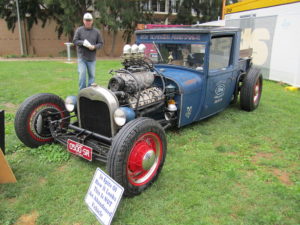Selecting and Adjusting Aftermarket Anti-Roll Bars
by: Miroslav Ovcharik

By Sicnag (Ford Model T Rat Rod Uploaded by OSX) [CC BY 2.0 (http://creativecommons.org/licenses/by/2.0)], via Wikimedia Commons
Anti-roll bars should be chosen to match your springs. If you are planning on installing stiff springs, there is no need for a large diameter sway bar. The combination of stiff springs and small sway bars is enough to control body roll. Large diameter sway bars are necessary if you will be using relatively soft springs. This is a popular configuration since the ride is not overly harsh, but the suspension is still stiff and body roll is reduced due to the sway bars.
Soft springs with large sway bars and stiff springs with small sway bars accomplish virtually the same goal of providing a stable suspension and reducing excessive weight transfer. A stiff springs/small sway bars setup is generally better than soft springs/large sway bars because stiff springs reduce front-to-back weight transfer. With soft springs, side-to-side weight transfer is controlled by the sway bars, but there is a fair amount of front-to-back weight transfer due to the soft springs. In other words, using soft springs can result in brake dive and acceleration squat, which are detrimental to overall handling.
Visit my website for more information about anti-roll bar adjustments:www.240edge.com
| About The Author
Miroslav Ovcharik I have been an automotive enthusiast throughout my life and have participated successfully in various amateur racing series. I specialize in tuning the Nissan S platform cars, particularly the US domestic market Nissan 240SX. Visit my websitewww.240edge.com, which focuses on Nissan 240SX modifications, to get information about suspension setup, quality upgrades, and general 240SX tuning. Feel free to republish my articles, but please include a text link to my websitewww.240edge.com. |
Article Source: Article City
